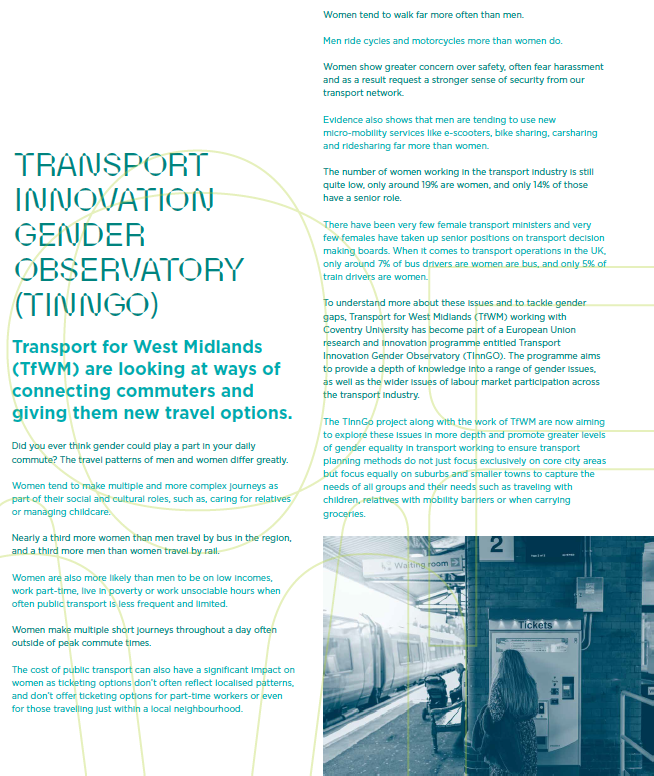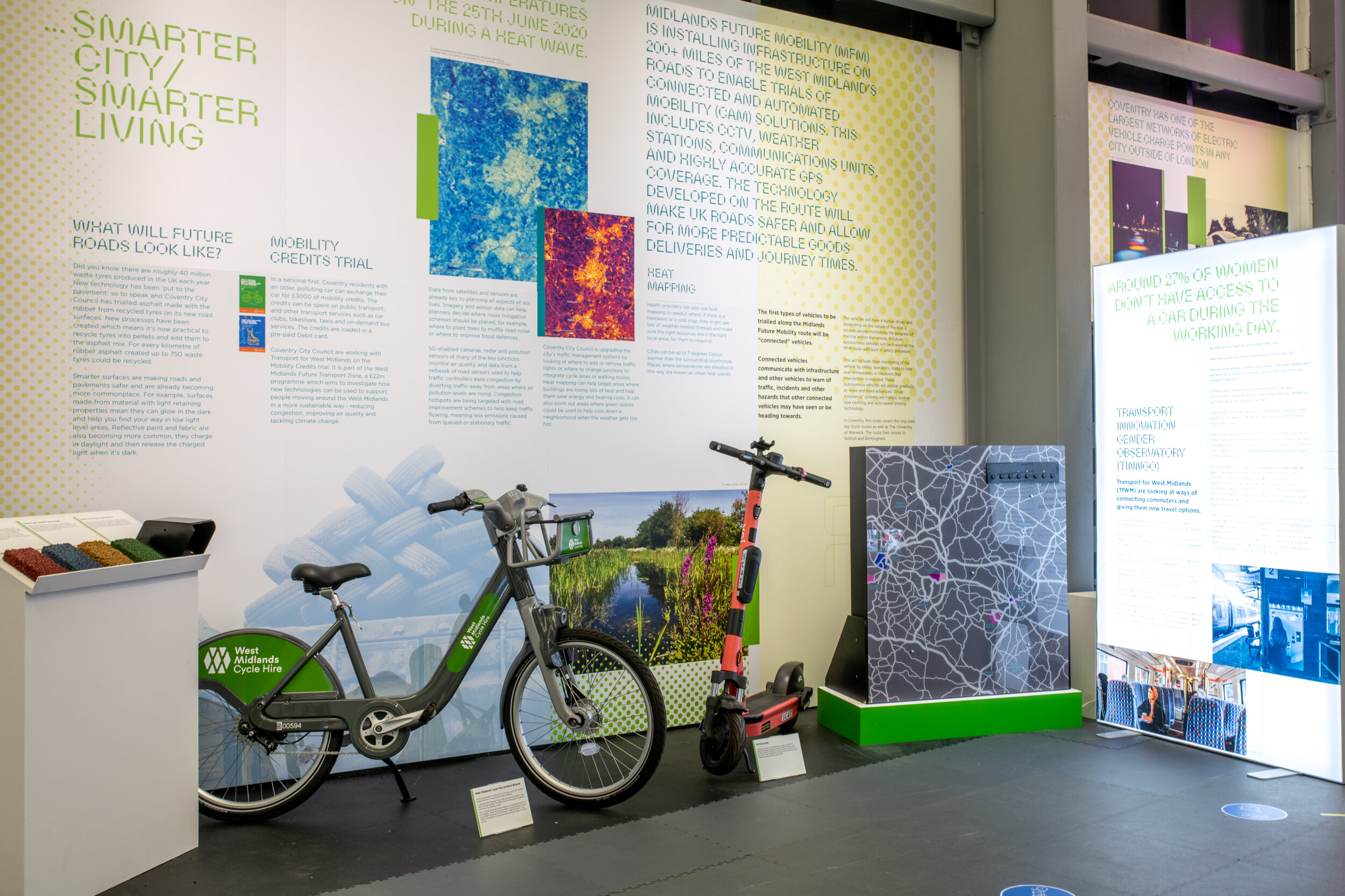
Our Future Moves
Smarter City // Smarter Living
What might the buildings or streetscapes of the future look like? How is intelligent design and connectivity going to make life easier?
As smart and 5G technologies continue to make it easier to be connected, the possibilities to interact with the physical environment open up. Today, phone apps not only give you information but can warn you of hazards or even highlight things you might be interested in on your journey through the city. For example, sensors on pedestrian crossings linked to an app on your phone can warn you when you are approaching a road.
Public transport display screens link with the GPS systems in a bus or train and tell you exactly how long you will be waiting for the next one. Real-time traffic flow monitoring can advise commuters of quicker routes to get them to their destinations, and when you arrive even where to go for an empty parking space, saving the commuter more time. Travel assistant platforms or apps are being developed all the time and use real-time data to advise on how best to get around.
West Midlands OnDemand is a new type of bus service available in Coventry and at The University of Warwick. It does not follow a specific route. You can book a journey without needing to use a specific bus number or stop. Instead, you can book a journey through the WM OnDemand app and be picked up at the time you choose.
Voi e-scooter
The Voi e scooter is one example of a growing trend of electric powered scooters. Schemes like these allow users to hire a scooter for shorter journeys, rather than having to buy one. These are ideal for moving around cities and towns making journeys quicker and greener.
Did you know there are roughly 40 million waste tyres produced in the UK each year? New technology has been ‘put to the pavement’ so to speak and Coventry City Council has trialled asphalt made with the rubber from recycled tyres on its new road surfaces. New processes have been created which means it's now practical to recycle tyres into pellets and add them to the asphalt mix. For every kilometre of rubber asphalt created, up to 750 waste tyres could be recycled. Smarter surfaces are making roads and pavements safer and are already becoming more commonplace. For example, surfaces made from material with light retaining properties mean they can glow in the dark and help you find your way in low light level areas. Reflective paint and fabric are also becoming more common, they charge in daylight and then release the charged light when it's dark.
Tarmac is the first in the UK to develop a new asphalt technology capable of recycling end-of-life tyres (ELTs) into roads. Coventry has been home to some of the first trials of these new surfaces.
West Midlands Cycle Hire Scheme Bicycle
This is an example of a bicycle from the new cycle hire scheme being rolled out throughout the West Midlands. Customers hire the bikes via an app and borrow a bike to help them on their journey. The bikes are manufactured in Stratford-upon-Avon by Pashley Cycles. The on-street docks are being made by Universal Fabrications in Nuneaton, while the locking system is produced by Coventry based RDM Group and PHA Europe in West Bromwich. The plastic mouldings for the bikes and docks are made in Telford by LVS.
Pashley Tilting E-Cargo Trike
Pashley Cycles have been in continuous production of carrier/cargo cycles for over 90 years. More recently they have been successful in the “Mobility as a Service” market, providing the hire bikes for London, Edinburgh and West Midlands cycle hire schemes. The key innovation in this vehicle is that the front part can tilt.
Smart lighting schemes allow lights to alter switching on times depending on light levels or activate when there is movement from vehicles under them. Road lighting is also adapting to only activate when there is the safety need for it but dimming when there is not. Traffic island bollards are now being powered by solar panels or even just switched to highly reflective as another way to save energy. Other changes being made include the use of new, more robust and longer life, energy-efficient bulbs giving better lighting levels on the streets you use.
Streetlights have also become a useful and alternative way to charge electric vehicles as the lights are already wired into the power grid. Working together with infrastructure providers, local companies such as Sarginsons and Balfour Beatty, as well as charging companies like EO Charging, char.gy and Connected Kerb now offer different ways to charge electric vehicles. These partnerships will help make it easier than ever before as these new solutions are developed to adapt to the variety of streetscapes.
Moving to electric powered vehicles won't happen overnight. How do you get all those extra EV users access to power supplies? Technology now means chargers are being designed for a lot of different environments and users. For example, there is rapid charging for quick stopping, home charging solutions, industrial chargers for depots and commercial fleet vehicles, commuter and leisure users charging curbside on different road surfaces and the list goes on. No lone charging solution will work for all.
Coventry has one of the largest networks of electric vehicle charge points in any city outside of London with 182 public charge points - rapid, semi-rapid and fast charge points are already in place. There are 286 other charge points that help support business and commercial fleets as well. Coventry City Council’s own fleet of vehicles is also being converted to electric over the next few years.
Midlands Future Mobility (MFM) is installing infrastructure on 200+ miles of the West Midland’s roads to enable trials of Connected and Automated Mobility (CAM) solutions. This includes CCTV, weather stations, communications units, and highly accurate GPS coverage. The technology developed on the route will make UK roads safer and allow for more predictable goods deliveries and journey times.
The first types of vehicles to be trailed along the Midlands Future Mobility route will be “connected” vehicles. Connected vehicles communicate with infrastructure and other vehicles to warn of traffic, incidents and other hazards that other connected vehicles may have seen or be heading towards. The vehicles will have a human driver and, depending on the nature of the trial, a second person monitoring the progress of the trial within the vehicle. In future, autonomous vehicles will be trailed on the MFM route with built in safety processes. This will include close monitoring of the vehicle by safety operators, ready to take over immediately in the event that intervention is required. These autonomous vehicles will appear gradually as more and more advanced “Driver Assistance” systems are trailed, such as lane centring and auto-speed limiting technology. In Coventry, this route covers the ring road, key trunk routes as well as the University of Warwick.
Transport for West Midlands (TfWM) is also looking at ways of connecting commuters and giving them new travel options. The commute in the future might involve different methods of travel within one journey and companies are looking at the needs of their users, for example, offering free Wi-Fi, better seating, better heating/cooling and ticket options.












